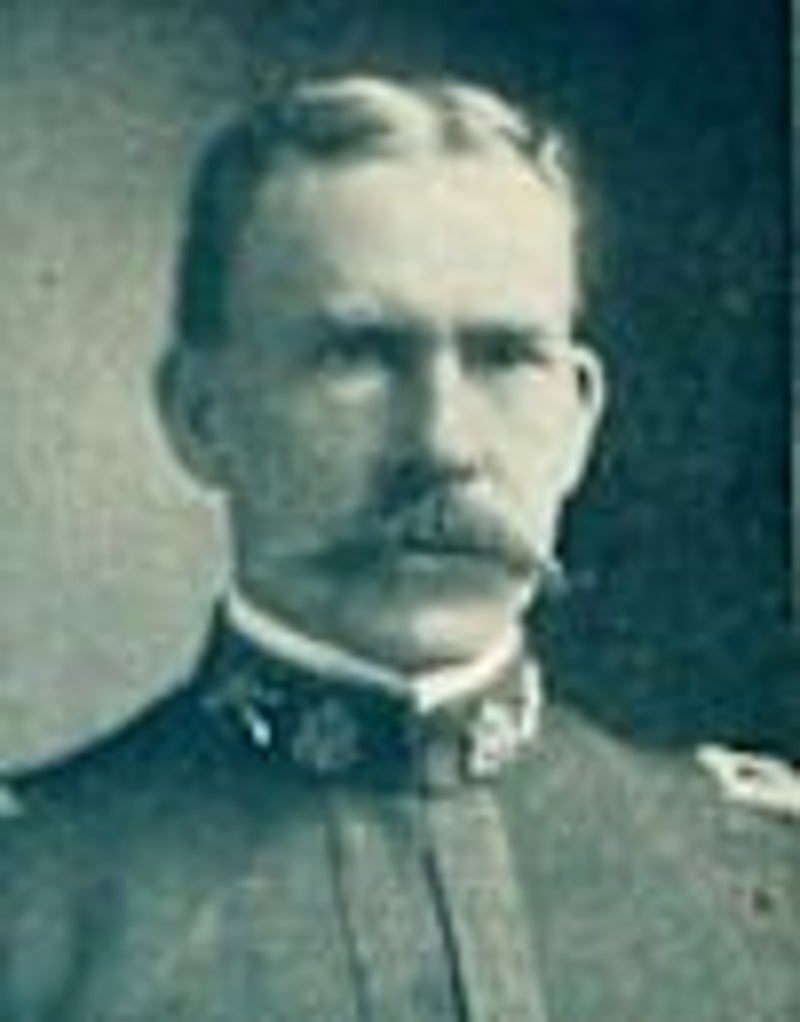Lt. Frank Herman Albright and the Dragoon Heliograph System
Lt. F.H. Albright refers to Frank Herman Albright (full name: Frank Herman Albright, August 2, 1865 – July 21, 1940), a career U.S. Army officer who served as a second lieutenant in the 9th Infantry Regiment during the late 1880s in Arizona Territory. Born in Ottawa, Ohio, to William I. Albright and Mary (Shierlow) Albright, he graduated from the United States Military Academy at West Point in June 1887—ranking 64th (last) in a class of 64—earning his commission as a second lieutenant in the Infantry branch.
He was initially assigned to the 12th Infantry at Fort Sully in Dakota Territory but was quickly reassigned to Company G, 9th Infantry, at Fort Bowie, Arizona Territory, arriving around August 1887.
Fort Bowie, located in southeastern Arizona near the Chiricahua Mountains, was a key outpost during the Apache Wars and a hub for the U.S. Army's experimental heliograph (signaling mirror) communication network. Service with the 9th Infantry in Arizona (1887–1891)Albright's early career placed him in the thick of post-Geronimo Apache campaign operations. The 9th Infantry, a "Buffalo Soldier" regiment composed primarily of African American enlisted men led by white officers, was stationed in Arizona Territory from 1886 to 1891, primarily at Forts Bowie and Huachuca, where it conducted patrols, garrison duties, and supported signal operations.
As a junior officer, Albright would have been involved in routine infantry tasks such as scouting for Apache holdouts, escorting supply convoys, and maintaining outposts. In 1888, his regiment relocated to Fort Huachuca (about 70 miles west of Fort Bowie), where he continued service until the unit's transfer to Madison Barracks, New York, in 1891.
The 9th Infantry had a notable role in signal work during this era. For instance, in 1890, 2nd Lt. C.W. Fenton of the same regiment reconnoitered heliograph lines from Whipple Barracks to other posts, highlighting the unit's involvement in communications infrastructure.
Albright, as a fellow junior officer in the regiment, likely participated in similar support roles, though specific assignments for him are not detailed in available records.
Connection to the Fourr Heliograph Station, Dragoon, AZ (1890)
The "Fourr Heliograph station in Dragoon AZ" refers to the heliograph outpost at Cochise Stronghold (also known as Fourr's Ranch), located on the west side of the Dragoon Mountains near present-day Dragoon, Arizona (Cochise County, about 15 miles northeast of Fort Bowie).
This site was part of the U.S. Army's innovative heliograph network—a system of mirror stations that flashed Morse code signals via reflected sunlight over distances up to 25–30 miles, bridging gaps in telegraph lines during the Apache Wars.
- Historical Context of the Station: Established in May–June 1886 under Col. (later Gen.) Nelson A. Miles during the Geronimo campaign, it was one of 13 initial Arizona stations (designated variably as Station #3 or #4 in different reports).
- The site overlooked the rugged Dragoon Mountains, a former stronghold of Apache leader Cochise (d. 1874), and was chosen for its elevated vantage (around 5,000–6,000 feet) for line-of-sight signaling to nearby stations like Bowie Peak, Fort Bowie, and Antelope Springs. It consisted of a simple brush ramada shelter for 5–8 signalmen, stocked with 30 days' rations against potential Apache raids.
- The station relayed critical intelligence, such as spotting Apache movements, contributing to the system's only major tactical success in June 1886 (capturing a renegade band via alerts to Forts Huachuca and Bowie).
- 1890 Operations: By 1890, the network had expanded to 51 stations across Arizona and New Mexico for a massive Signal Corps practice (May 15, 1890, dubbed the "Volkmar Practice" after its organizer, Col. William J. Volkmar), involving 162 personnel and 37 heliographs over 2,000 miles.
The Fourr/Cochise Stronghold site was not among the 18 new 1889–1890 stations (which focused northward, e.g., Mount Graham, Rincon Mountain), but legacy 1886 stations like it were likely reactivated or used for support during the practice.This was the largest heliograph exercise ever conducted, testing long-distance messaging (e.g., 700–800 miles in 4 hours). - As Company G, 9th Infantry, was based at Fort Bowie (adjacent to the Dragoon Mountains), Albright would have been in position to command or oversee detachments at forward stations like Fourr's during this period. However, primary command of heliograph operations typically fell to Signal Corps specialists (e.g., Lt. William A. Glassford or C.F. von Herrmann), with infantry officers like Albright providing security, logistics, or auxiliary signaling.
No primary sources explicitly name Albright as the commander there, but his regiment's proximity and role make this a plausible assignment for a junior lieutenant in 1890.
Later Career HighlightsAlbright's Arizona service launched a 40+ year career marked by steady promotions and combat experience:
- 1898 (Spanish–American War): Promoted to captain; commanded a company in Puerto Rico (arrived after the armistice) and later at Fort Grant, AZ.
- 1899–1902 (Philippine–American War): Served with the 25th Infantry in combat against insurgents.
- 1906–1909: Commissary officer for the 25th Infantry in the Philippines and San Francisco.
- 1915: Graduated from the Army War College.
- World War I (1917–1919): Promoted to temporary brigadier general; commanded the 151st Infantry Brigade (76th Division) in France, then the 56th Infantry Brigade (28th Division) in the Meuse-Argonne Offensive.
- Post-War: Retired as colonel in 1922; advanced to brigadier general on the retired list in 1930.
Albright died in Washington, D.C., in 1940 and is buried at Arlington National Cemetery. His early Arizona posting, amid the fading Apache conflicts and cutting-edge signaling tech like the heliograph, exemplified the transition from frontier warfare to modern Army operations.

Brigadier General Frank Herman Albright was a career officer in the United States Army. A veteran of the Spanish–American War, Philippine–American War, World War I, he attained the rank of brigadier general and was most notable for his role as First World War command of the 151st and 56th Infantry Brigades.
- Born: August 2, 1865, Ottawa, Ohio, U.S.
- Died: July 21, 1940, San Diego, California, U.S.
- Spouse: Minnie L. Scott
- Education: United States Military Academy